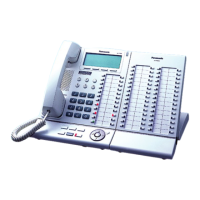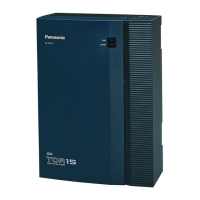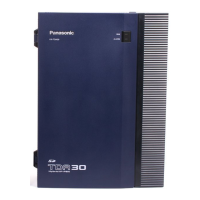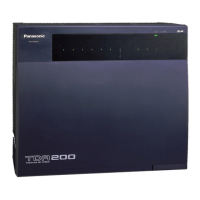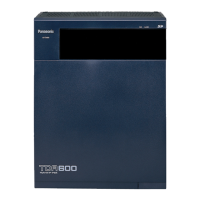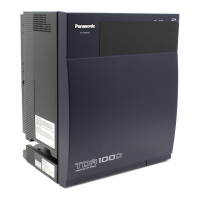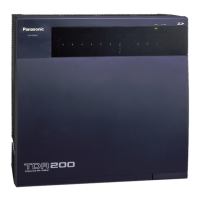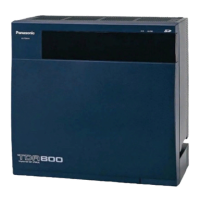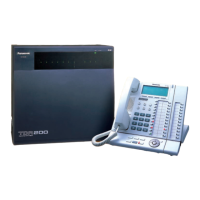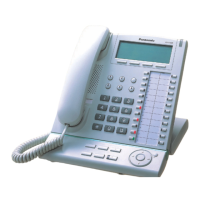1.25 Networking Features
Feature Guide 199
5. Sends the call down the TIE line via CO line group 8. The number is still "3001".
PBX-3 receives the call.
1. PBX-3 checks its Incoming Number Modification Table (not shown here). No modification is
programmed. The number is still "3001".
2. PBX-3 checks its Extension Numbering Plan. "3001" is one of its extensions.
3. PBX-3 sends the call to extension 3001.
3. TIE Line with CO Line Calls
Three types of CO line calls can be made or received via TIE lines:
1) CO-to-TIE Line Calls
2) TIE-to-CO Line Calls
3) CO-to-TIE-to-CO Line Calls
3.1. CO-to-TIE Line Calls
An extension of a PBX can be the destination of a CO line call received by another PBX first.
a) Incoming CO Line Call Destination Assignment
An extension of a PBX can be the Direct In Line (DIL) destination of a CO line call received
first by another PBX.
[Example]
Explanation:
A call is received on CO line 01 of PBX-1.
The call is directed to extension 2001, which is assigned (not shown here) as the DIL
destination for CO line 01 in the DIL Table of PBX-1. (→ 1.1.1.2 Direct In Line (DIL))
b) FWD/Call Transfer/Intercept Routing to the TIE Line
A CO line call can be redirected to a destination of another PBX via Call Forwarding (FWD),
Intercept Routing, or Call Transfer.
Extn. 2001
Outside Caller
CO Line 01
Private Network
Telephone
Company
PBX-2PBX-1
Dials a telephone number
used by PBX-1
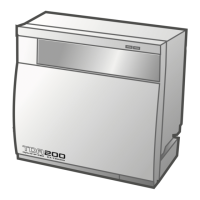
